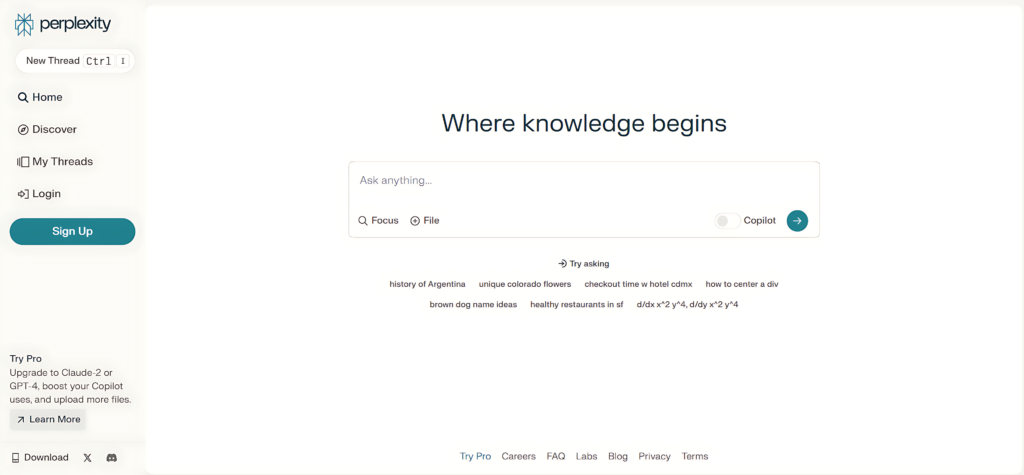In the realm of artificial intelligence (AI) and natural language processing (NLP), a term that has been garnering significant attention is perplexity AI. This groundbreaking concept is poised to revolutionize our interactions with machines, redefine our understanding of language, and enhance the capabilities of AI systems. In this enlightening article, we will delve into the intricacies of perplexity AI, exploring its essence, functioning, purpose, and the undeniable benefits it bestows upon the world of NLP.

Table of Contents
What is Perplexity AI?
At its essence, perplexity AI serves as a metric employed to assess the effectiveness of language models, particularly in NLP tasks. It stands as a quantitative gauge of a language model’s proficiency in predicting the subsequent word in a sequence of text. A lower perplexity score signifies a more precise and fluent language model in comprehending and generating coherent text. Conversely, a higher perplexity score indicates a greater degree of uncertainty and less accurate predictions.
How Does Perplexity AI Operate?
The operation of perplexity AI centers on the fundamental concept of probability distribution. It calculates the likelihood of encountering a specific word within a given sequence, taking into account the context provided by the preceding words. Here’s a simplified breakdown of its functioning:
1. Probability Distribution:
Perplexity AI initiates its process by scrutinizing a set of text data or a corpus, discerning the patterns and associations between words. It constructs a probability distribution, essentially ascribing probabilities to each word based on its context within the text.
2. Prediction:
When confronted with a sequence of words, the language model utilizes this probability distribution to anticipate the subsequent word in the sequence. The objective is to generate text that not only adheres to grammatical correctness but also maintains contextual relevance.
3. Evaluation of Perplexity:
The perplexity score is derived from how well the model’s predictions align with the actual following words in the text. A lower perplexity score denotes that the model’s predictions are more accurate and closer to the authentic text, reflecting a higher level of comprehension.
Why Do We Employ Perplexity AI?
1. Advancing Language Models:
Perplexity AI constitutes a pivotal instrument in the ongoing quest to enhance language models. By assessing and minimizing perplexity, developers can fine-tune language models, rendering them more adept at comprehending and generating human-like text. This culminates in responses that are more fluent and contextually pertinent in applications like chatbots, virtual assistants, and automated content generation.
2. Elevating Natural Language Understanding:
One of the primary motivations behind the utilization of perplexity AI is to augment the natural language understanding capabilities of AI systems. When language models can predict the subsequent word in a sentence with precision, they can more effectively grasp context, tone, and intent. This, in turn, results in more efficacious communication between humans and machines.
3. Enhancing Machine Translation:
Perplexity AI heralds a paradigm shift in the realm of machine translation. Language models boasting lower perplexity scores can translate text between languages with heightened accuracy. This advancement carries profound implications for global communication, transcending language barriers and fostering cross-cultural comprehension.
Why is Perplexity AI Beneficial?
1. Enhanced User Experience
In applications such as chatbots and virtual assistants, lower perplexity scores translate into responses that are more coherent and contextually relevant. This significantly enhances the user experience, making interactions with AI systems smoother and more intuitive.
2. Consistent and High-Quality Content Generation:
For content creators, This AI tool opens doors to intriguing possibilities. Language models with low perplexity scores can generate top-tier articles, reports, and product descriptions that maintain a consistent tone and style. This not only saves time but also ensures that the content aligns seamlessly with the brand’s voice and message.
3. Breaking Down Language Barriers:
Machine translation powered by perplexity AI possesses the potential to bridge language divides on a global scale. As language models become more adept at understanding and generating text in diverse languages, cross-cultural communication becomes more accessible and precise.
Conclusion
In the ever-evolving landscape of artificial intelligence and natural language processing, perplexity AI stands as a beacon of progress. Its role in evaluating and enhancing language models is pivotal, contributing to the generation of more accurate, fluent, and contextually relevant text.
The adoption of perplexity AI is driven by the aspiration to elevate language understanding, enhance user experiences, and facilitate effective communication across languages. As technology continues its relentless advancement, the benefits of perplexity AI become increasingly evident, promising a future where machines comprehend and generate human language with unparalleled precision.
To summarize, this AI tool transcends being merely a metric; it emerges as a driving force propelling the evolution of AI-powered language models, ushering in a new era of language comprehension and communication.

1 thought on “Perplexity AI”